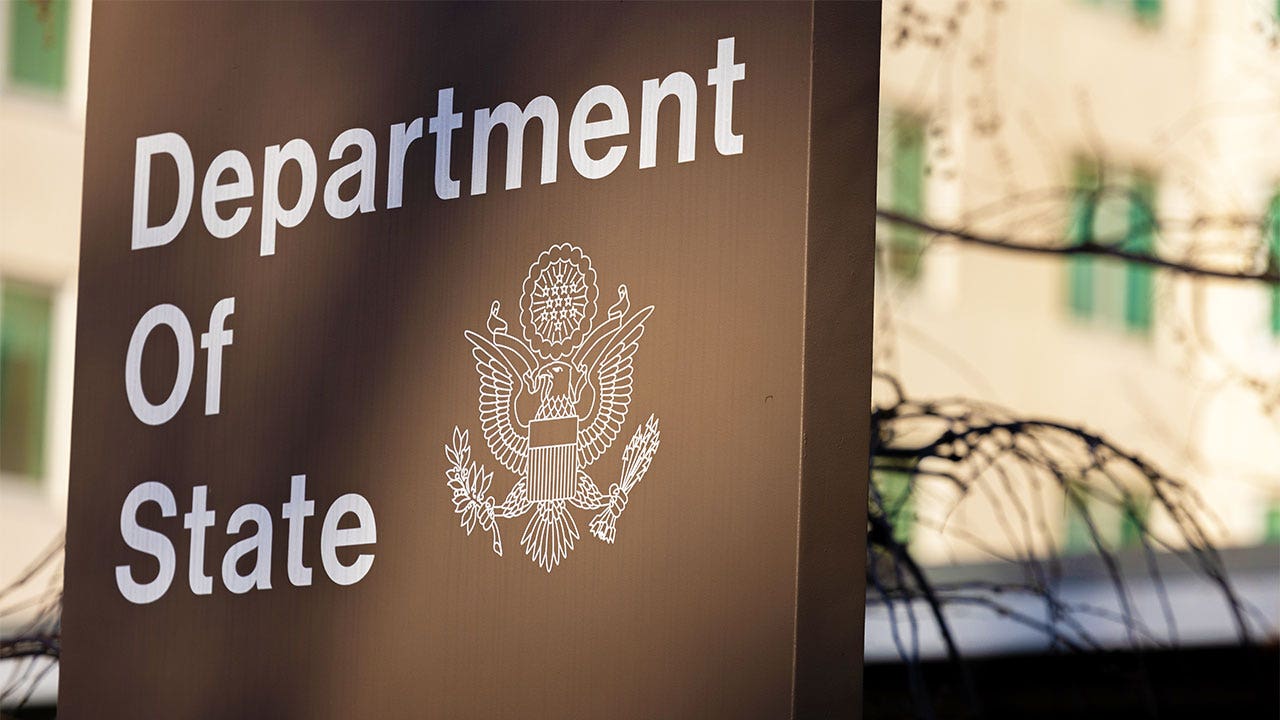A report in the pro-Kremlin media suggests that the troubled effort to return the Russian Navy’s sole aircraft carrier, Admiral Kuznetsov, to operational service will be terminated. Overhaul and modernization work on the Cold War-era flattop began almost eight years ago but has apparently been abandoned some time ago. As we have discussed in the past, the viability of putting the Kuznetsov back to sea has long been in doubt, and, with many competing priorities, exacerbated by the war in Ukraine, the warship might now finally be destined for the scrapper’s torch.
According to the newspaper Izvestia, citing what it describes as “informed sources,” the Russian Navy and the United Shipbuilding Corporation (USC) are poised to make a final decision on the fate of the Kuznetsov, with signs pointing to the likelihood that they will pull the plug on the modernization program.
A satellite view of the Admiral Kuznetsov dockside at the 35th Squadron Shipyard, also known as Sevmorput, on June 20, 2023. Google Earth
The plan to remove from service the country’s only aircraft carrier is backed by senior Russian Navy figures.
Adm. Sergei Avakyants, the former commander of Russia’s Pacific Fleet, told Izvestia that the Russian Navy “does not need aircraft carriers in their classic form in the long term.” Describing aircraft carriers as “a thing of the past,” Avakyants said that they “can be destroyed in a few minutes by modern weapons.”
“It is a very expensive and ineffective naval weapon,” Avakyants continued. “The future belongs to carriers of robotic systems and unmanned aircraft. And if a decision is made not to continue the repairs, the only thing left to do is to take the Admiral Kuznetsov, cut it up for scrap metal, and dispose of it.”
The mention of drone-carrying warships is notable in that it reflects growing trends among a variety of navies in Europe and elsewhere, but, so far, at least, there has been no indication that Russia plans to start work on vessels of this kind.
As for the Kuznetsov, the warship has been in a downward spiral since its overhaul and modernization began in 2017. Soon after it arrived at the shipyard, there were indications that the scope of the work was being dramatically reduced, throwing the fate of the warship into question. During the overhaul process, the carrier has suffered multiple fires and a drydock sinking. By early 2021, analysis of photos of the carrier suggested that work on the vessel had more or less stopped in the previous 12 months.
The Russian Navy’s lone aircraft carrier, Admiral Kuznetsov, is towed to the 35th Squadron Shipyard for maintenance and repair works in Murmansk, Russia, on May 20, 2022. Photo by Semen Vasileyev/Anadolu Agency via Getty Images
In February 2023, the Kuznetsov finally departed its drydock at the Sevmorput Naval Shipyard in Russia’s northwestern Murmansk region, but only two months later came reports that the carrier’s crew had been disbanded, providing another hurdle to getting the ship into any meaningful kind of service.
As we pointed out at the time, re-forming the carrier’s crew would be a challenge at any time, but is now very much compounded by wider military personnel shortages ongoing in the context of the war in Ukraine.
Amid all these problems, the previously indicated timeline for getting the carrier back into Russia’s combat fleet has slipped. The ship was originally meant to have finished its overhaul in 2021.
Even before the overhaul began, the Kuznetsov had its fair share of mishaps. Most notably, there was an onboard fire off Turkey in 2009, which led to the deaths of several crew members.
In 2016, two of its fighters were lost only days apart while supporting Moscow’s military campaign in Syria.
Russian Su-33 fighter jet chilling in the waters of Mediterranean Sea back in 2016.
The Sukhoi Su-33 (NATO reporting name Flanker-D) crashed after trying to land on Russian aircraft carrier Admiral Kuznetsov operating off the coast of Syria.
The pilot was saved. pic.twitter.com/YLNcp7ceR6
— Clash Report (@clashreport) October 2, 2023
Meanwhile, as Kuznetsov gets older, the utility of continuing overhaul work becomes increasingly questionable. The overhaul — which was to include upgrades to its powerplant and electronics equipment — had been intended to keep the carrier in service for possibly another decade or more, but the longer the process takes, the less economic sense this makes.
In the meantime, funds could be much better invested in more practical and sustainable efforts, something TWZ has pointed out in the past.
Despite increasing calls to abandon work on the Kuznetsov sooner rather than later, it’s worth noting that there are also official plans that could interfere with this.
As noted in the Izvestia article, the Fundamentals of State Policy in the Sphere of Naval Activity until 2030 document states that the Northern and Pacific Fleets should each have an aircraft carrier. Regardless of funding, such ambitions are totally unrealistic. After all, even if the Kuznetsov could be returned to operational status with the Northern Fleet, there is no meaningful plan to construct another aircraft carrier before 2030. Earlier plans to start work on a new nuclear-powered carrier design have long since been put on ice.
Admiral Kuznetsov again pictured on May 20, 2022. Photo by Semen Vasileyev/Anadolu Agency via Getty Images
On a planning level, there may still be aspirations among proponents of Russian carrier aviation to reintroduce flattops in some form or other. However, even their most loyal supporters realize that, as long as the war in Ukraine continues, there is very little chance of such programs getting funding.
“I think that in the ship construction program for the period up to 2050, which was recently reviewed by the Marine Collegium under the president, the issue of creating aircraft carriers is somehow present,” retired RADM Mikhail Chekmasov told Izvestia. “The question is different — it’s about funding, given that the Special Military Operation is currently underway.”
For the time being, the only operational activity relating to Russian carrier aviation is the country’s air wing, which is spearheaded by Su-33 and MiG-29KR fighters. These aircraft continue to be operated from land bases, but it’s now been many years since aircrews actually got a chance to fly from the carrier. Having pilots re-qualify for carrier operations would be possible, but the Su-33s, in particular, are also showing their age, with no replacement in sight.
In terms of warship construction, Russia is still working on the first of its Project 23900 big-deck amphibious assault ships, also known as the Ivan Rogov class, at a shipyard on the occupied Crimean Peninsula, as you can read about here. Should the Kuznetsov ultimately be scrapped, the addition of two new big-deck amphibious assault ships would give the Russian Navy an important capability boost, as TWZ has previously discussed:
“Ultimately, an amphibious assault ship is potentially much more flexible, even without conventional fixed-wing airpower. The Project 23900 is expected to be able to embark six landing craft to transport around 75 armored vehicles, 900 troops, and support equipment to a beachhead during an amphibious operation, but the vessels would also be suitable for floating hospitals or as flagships for littoral operations. With some modifications or with a tailored air group onboard, these warships could also take on anti-submarine or mine warfare roles. In addition, time and again, amphibious vessels of this kind have also shown their worth in non-combat scenarios, including disaster relief and humanitarian assistance missions.”
The Project 23900 Ivan Rogov class amphibious assault ship is seen under construction at Zaliv, Crimea, on November 17, 2024. Satellite image ©2025 Maxar Technologies
The continued development of aircraft carriers in countries such as China and India underscores the fact that navies still see a place for flattops carrying conventional fixed-wing aircraft. These warships can still be arbiters of naval power in an operational context, as well as key points of national prestige.
The Admiral Kuznetsov aircraft carrier photographed in happier times. Russian Ministry of Defense
At this point, however, the future of Russia’s sole aircraft carrier looks to be more uncertain than ever, with the arguments for continuing the effort to get it back into service becoming increasingly flimsy.
Contact the author: thomas@thewarzone.com
.png)
 German (DE)
German (DE)  English (US)
English (US)  Spanish (ES)
Spanish (ES)  French (FR)
French (FR)  Hindi (IN)
Hindi (IN)  Italian (IT)
Italian (IT)  Russian (RU)
Russian (RU)  5 hours ago
2
5 hours ago
2














Comments